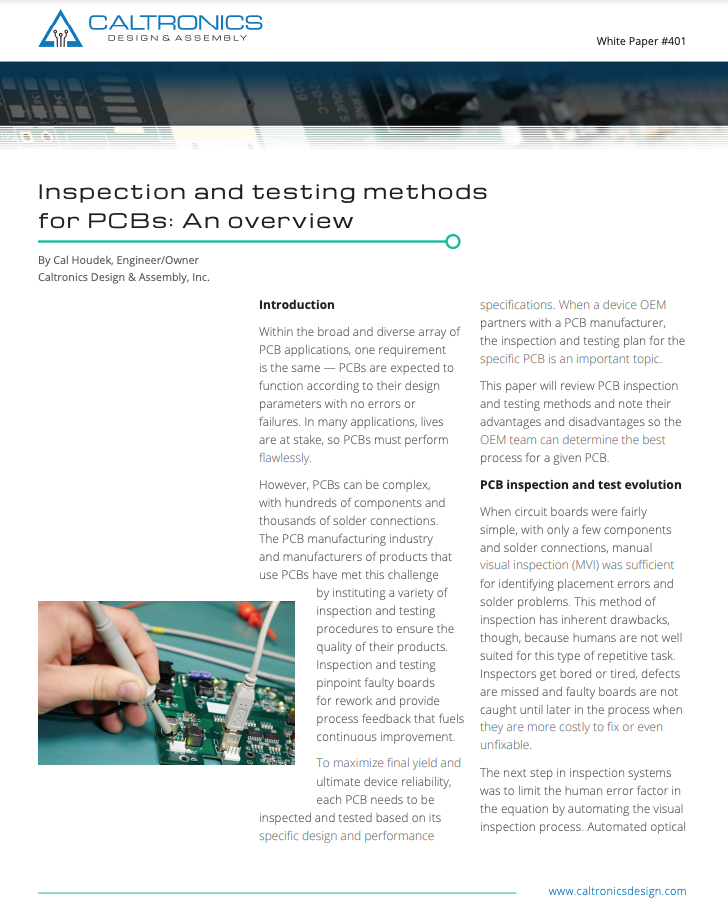
PCB profitability with Design for Test (DFT)
Design for test/testing/testability. Design for manufacture. Design for assembly. Design for…well, you get the picture. There are a lot of “design for’s” to keep in mind. But they all boil down to one concept: design for profitability.
That’s especially important when considering PCB design for test (DFT). PCBs can be complex, and they’re expected to work without errors. Inspection and testing are essential to PCB manufacturing but can be time-consuming and costly.
How can you accommodate inspection and testing requirements and keep a product profitable?

Five win-win reasons for leaning out your PCBA and electronics assembly
It’s a good bet your electronic product requires more than a printed circuit board assembly (PCBA). Components such as wires, actuators, controls, displays, potting and even an enclosure likely need electronics assembly. Plus you may need product labeling, instruction manuals, shelf packaging and so on.

Caltronics donation aims to build student interest
With a plan to build a relationship with local schools to help the students understand that manufacturing encompasses many different jobs, Caltronics Design and Assembly, Inc. designed and built a printed circuit board to donate to the high school electronics class.

PCB Design: Design for Manufacturability
Prior planning prevents poor performance, they say. With PCBs, effective planning involves Design for Manufacture and Assembly (DFMA). That means thinking past the “sky’s the limit” PCB-design phase to consider the realities of putting a product together.
DFMA principles focus on creating an efficient manufacturing process that lowers production costs.

The secret to PCB perfection (shhh, it’s inspection and testing)
The electronics business is made up of serious perfectionists whose basic assumption is that devices will perform flawlessly time after time. But perfection is hard to come by.
In the real world, a printed circuit board’s many components and solder joints must meet design specifications exactly for the PCB to function properly. To ensure perfection, inspection is a critical part of PCB fabrication.
What PCB inspection methodologies are there? Which ones will work best for your project? All you need to know is in our white paper.
